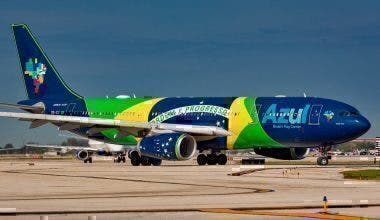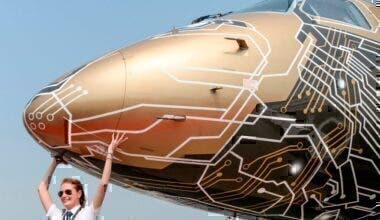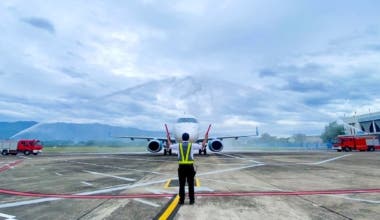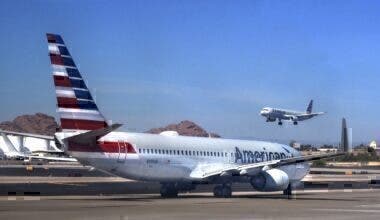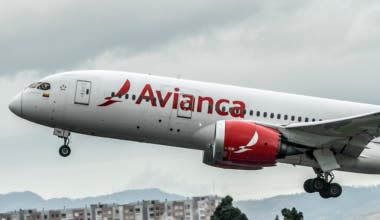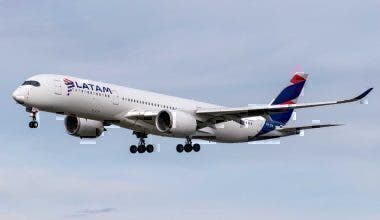Brazilian regional jet manufacturer Embraer’s new E-Jet E2 series has a striking nickname: the Profit Hunter. This refers to the aircraft’s ability to provide airlines with lower operating costs, which is a key selling point for carriers wanting to maximize their margins. Its demonstrators for the E2 family feature striking animal liveries painted by Clodoaldo Quintana.
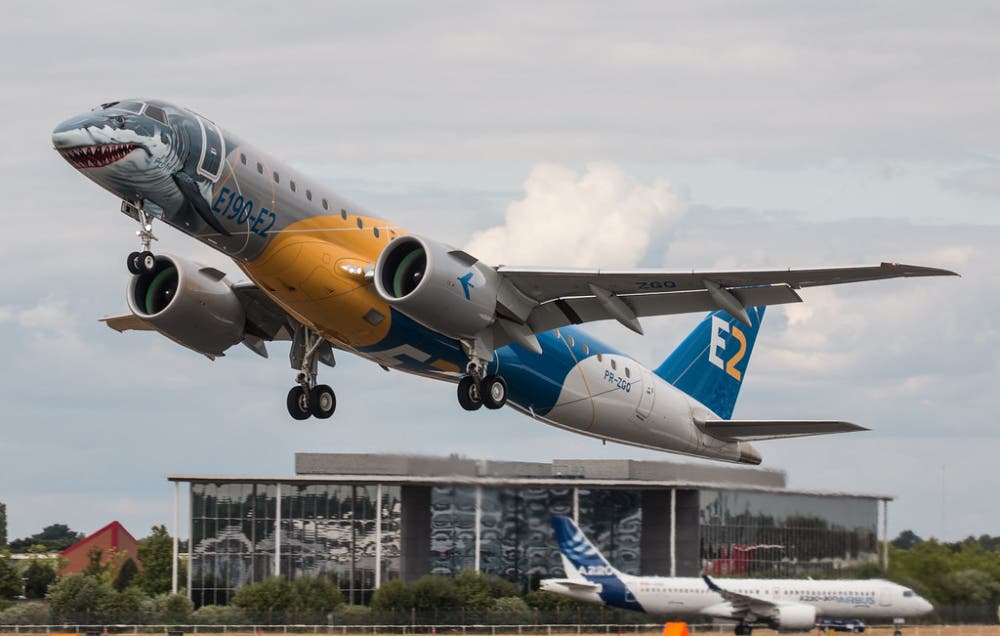
The E2 series in a nutshell
Let’s start by establishing the nature of the aircraft family that Quintana’s artwork promotes. Embraer launched the E2 series at the 2013 Paris Air Show, as a successor to its original E-Jet family of regional aircraft. The type first flew in May 2016, and entered service in April 2018 with Norwegian regional carrier Widerøe. There are three variants.
These are the E175-E2, E-190-E2, and E195-E2. They correspond roughly to Embraer’s original 175, 190, and 195 designs, but with a few key improvements. Specifically, the aircraft feature enhanced avionics and wing technology, as well as a new cabin.
They are powered by Pratt & Whitney’s modern PW1000G turbofans, also seen on the Airbus A220. In order to showcase its new jets, Embraer produced a series of ‘Profit Hunter’ demonstrators. These stand out from the crowd thanks to their animal artwork. One of these has even gone on to enter full passenger-carrying revenue-earning airline service.
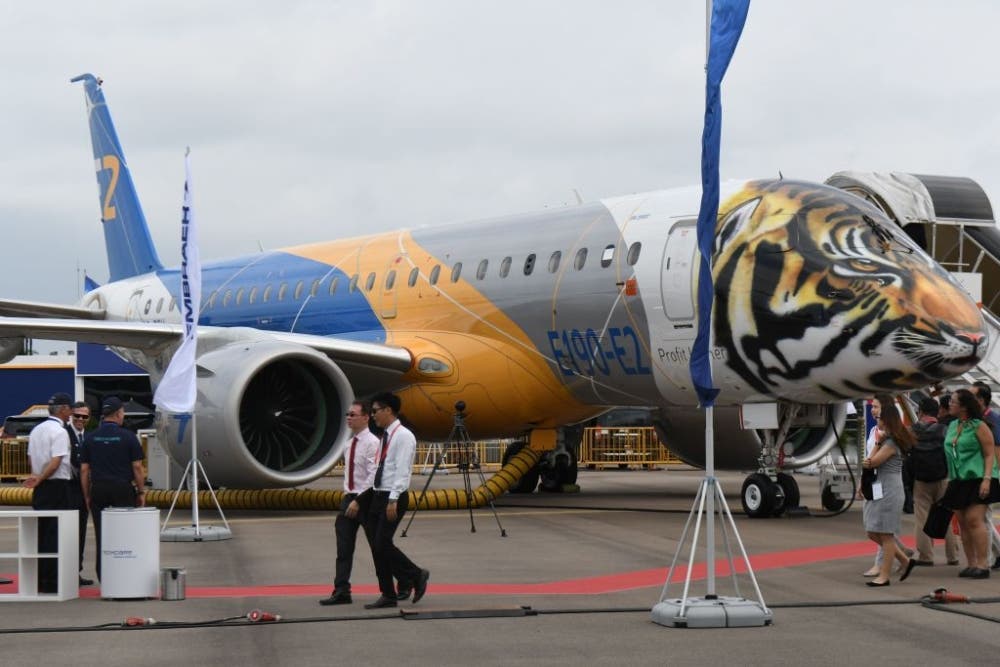
An ideal artist for the job
The animal paint schemes are the result of an initiative that came about in 2017. This saw Embraer task Clodoaldo Quintana with the job of painting the new aircraft in a way that embodies their profit-hunting characteristics. The result was spectacular, and Quintana made four different liveries whereby the aircraft’s nose features a carnivore’s face.
Quintana was an ideal candidate for this impressive undertaking. Having painted more than 1,500 aircraft since 2004 at Embraer‘s São José dos Campos facility, he knows the company and its planes well. However, it is not the number of planes that he has painted that is impressive, but also the way in which he applied his skills to the four E2 Profit Hunters.
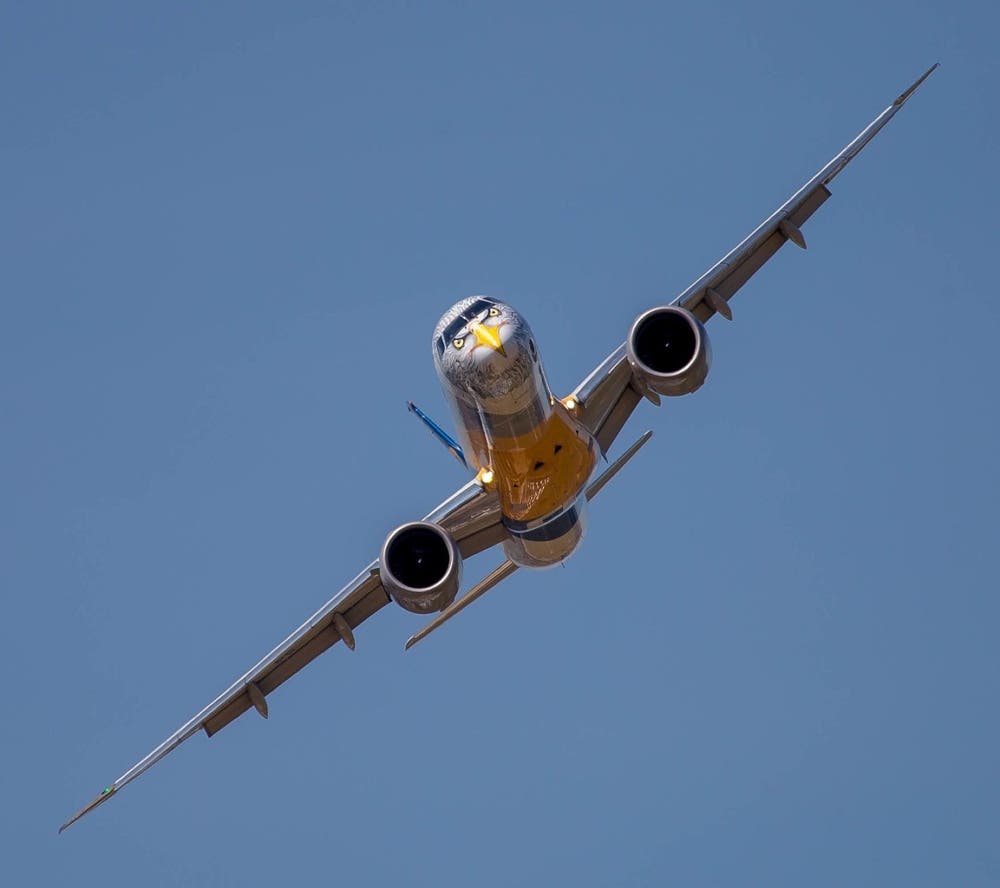
Four majestic demonstrators
This specifically regards the way in which he brings the animal-themed liveries to life. With aircraft being as large as they are, companies will sometimes use decals and vinyl wraps to apply complex liveries. However, Quintana takes pride in having hand-painted each of the four Profit Hunters. According to data from ATDB.aero, the planes are as follows.
- P4-KHA – E190-E2 in a snow leopard livery. Formerly PR-EQH, delivered to Air Astana in December 2018. Re-registered as EI-KHA in October 2021.
- PR-ZFU – E190-E2 in a tiger livery (applied in January 2018 for the Singapore Air Show).
- PR-ZGQ – E190-E2 in a shark livery as of July 2018.
- PR-ZIJ – E195-E2 in an eagle livery (applied in May 2017 for the Paris Air Show).
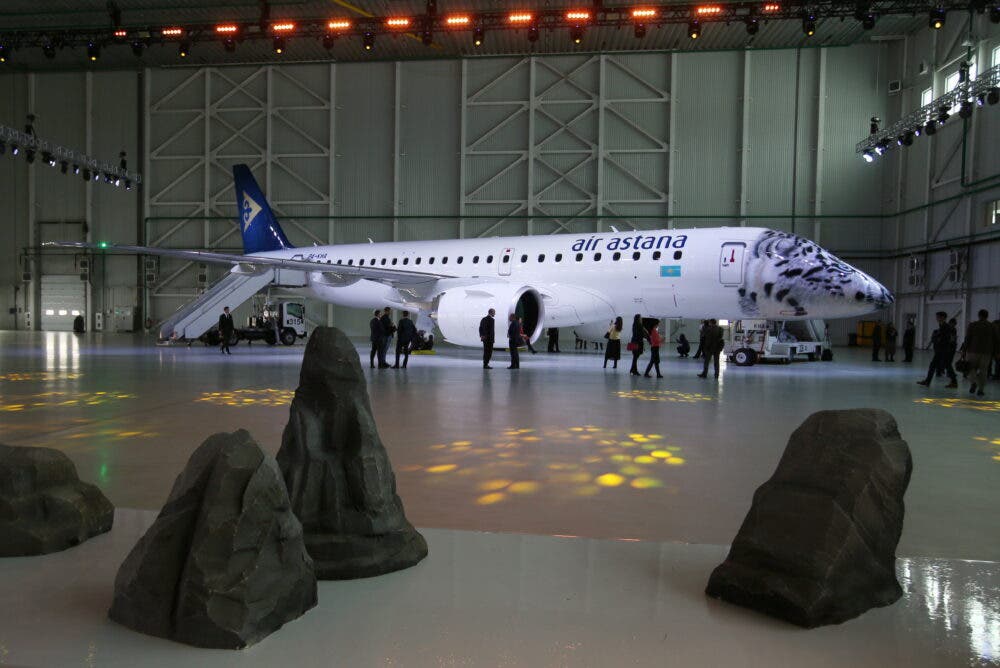
Of these aircraft, RadarBox.com shows that only PR-ZIJ and EI-KHA have recently been in action. Nonetheless, with airshows like the one currently happening in Dubai now starting to take place in person again, the dormant examples may get to hit the skies again soon.
Stay informed: Sign up for our daily and weekly aviation news digests.
Painted by hand
As previously alluded to, what makes the striking liveries all the more impressive is the fact that Quintana paints them by hand. However, he explains that this skilled task is actually the third part of a more complex process, that begins by getting to know the animal in order to represent it as authentically as possible. This typically involves watching videos of it.
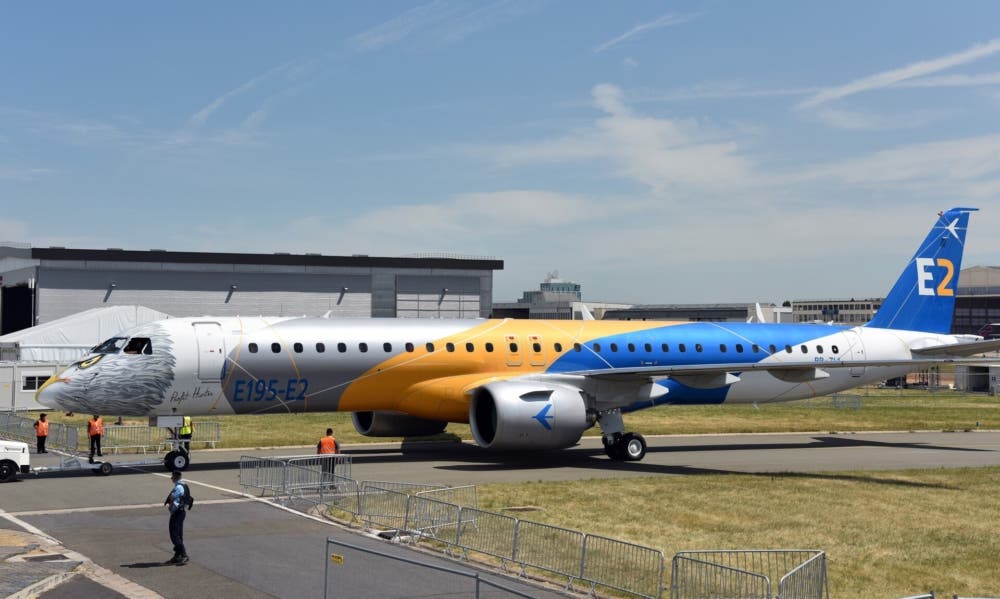
The next step is to pick one aspect of the creature to highlight with the livery. Quintana wanted to emphasize the features that make the animals what they are. He states:
“When painting the eagle, I made sure that the design of the feathers simulated the movement of the bird. In the shark, how the teeth protrude. These details are fundamental to giving life to the animal you are painting.”
Only having completed these two steps does Quintana then get busy with the painting itself. As seen in the video earlier in the article, he mixes the paints by hand before applying them with a spray gun. The use of stencils ensures that the colors picked go exactly where they need to. The shark design on PR-ZGQ took a week of work and five liters of paint.
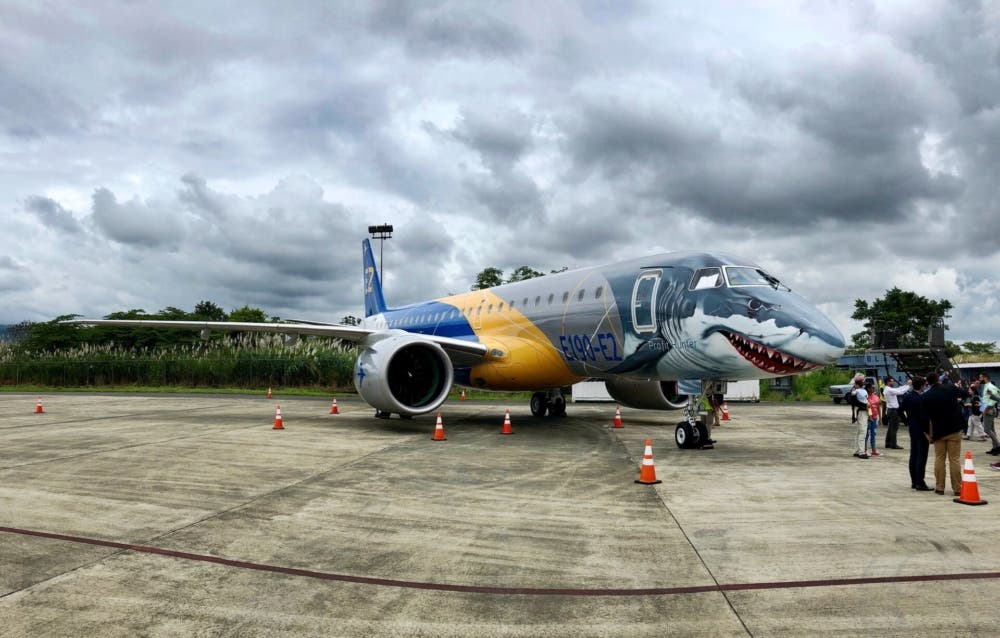
An opportunity with lots of responsibility
The task of painting the Profit Hunter liveries was a tremendous opportunity for Quintana. However, he also recognizes that it came with a high degree of responsibility. Nonetheless, he saw it as “a chance to showcase my ability,” which he certainly used to great effect. Explaining how he brought the aircraft’s animal faces to life, Quintana states that:
“My biggest concern was respecting the proportions of the animals, to create the optical illusion necessary to make the animals seem realistic on the aircraft. For the eagle, I did everything so that the feathers were as close to the real thing as possible. For the tiger, I used straw brooms as brushes to imitate the hairs.”
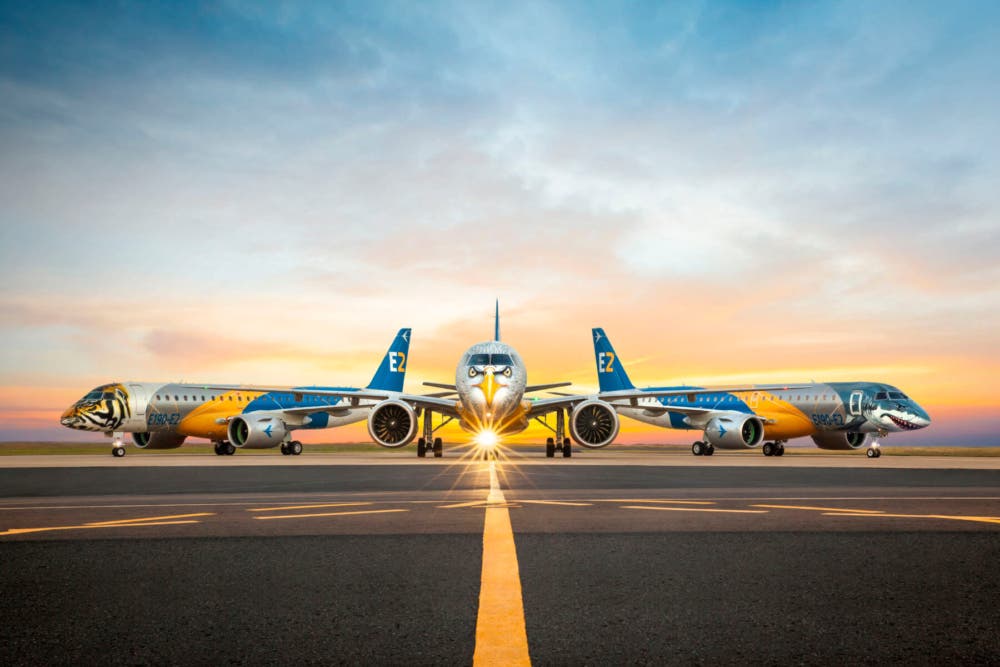
A triumphant initiative
While a lot of work had to go into making the Profit Hunter animal liveries a reality, it certainly paid dividends. Quintana drew on Trompe L’oeil street art German artist Edgar Müller to get the correct perspective, resulting in well-proportioned animal-based noses.
Aside from the publicity that Embraer gained from the striking aircraft, it has also won 14 international awards for the liveries. But what’s next? Quintana explains:
“My dream is to paint the animal of the Brazilian jungle. Have you thought to show the whole world a jaguar, an animal of ours, on an aircraft of ours? It would be very bold and I would love it.”
Did you know about how Embraer paints its ‘Profit Hunter’ demonstrators? Have you ever seen one of these majestically-liveried aircraft in person? Let us know your thoughts and experiences in the comments!

